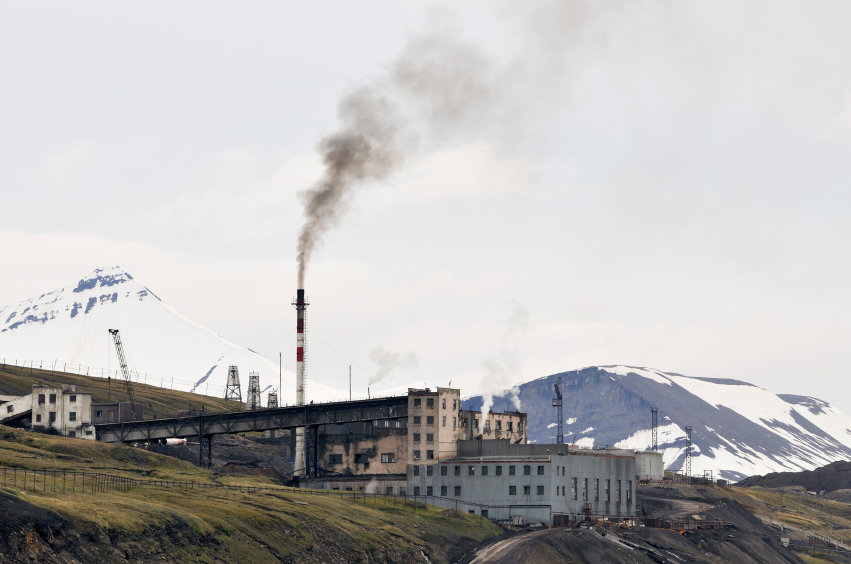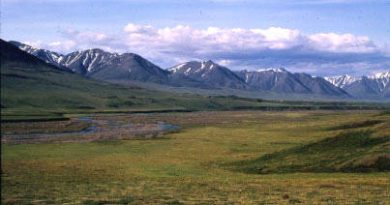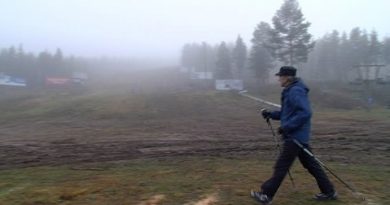Arctic air clearer after Soviet Union’s collapse, long-term study says

The clouds of black carbon soiling snow and ice in Finland’s Arctic region have diminished significantly since the middle of the 20th century, a change attributed to the collapse of the Soviet Union and the cessation of some of the most polluting industrial practices in northwestern Russia, according to a new study published in the Journal of Geophysical Research.
Much of the black carbon – also known as soot – came from the heavily polluted Kola Peninsula, where smelters and other industrial facilities belched smoke for decades, the study said.
Measurements at a monitoring station in Kevo, Finland been taken since 1964 with filters that capture the levels of airborne particulates – in all, 4,560 filters collected over 47 years. Analysis of the measurements found that, after a period of fairly stable levels in the 1960s, black carbon in the area’s atmosphere declined by about three quarters from the early 1970s to 2010, an average rate of 1.8 percent a year, the study said.
The decline was not in a neat linear pattern. There were seasonal differences, and there were certain periods of extremely high black-carbon levels, such as the late 1970s and late 1980s. Still, the reduction was dramatic, the study said.
“The most striking feature of the BC trend is that the concentrations, whether weekly or seasonal means, exhibited a remarkable decrease with time,” the study said.
Kola Peninsula emissions
Wood-burning for heat – an activity that bumped up emissions each winter over the study period – was a measureable factor, but minor compared to the industrial pollution streaming in from smelting and ore-baking operations in Russia, the study said.
“An inescapable conclusion is that, indeed, the Kola Peninsula emissions contributed very significantly to the (black carbon) observed at Kevo at all times during the observation period,” the study said.
The Kola Peninsula has been notorious for its pollution. Though the region’s residents in the 1950s accepted the environmental impacts of copper and nickel smelting, they rose up in protest by the 1990s, as described in one long-term study published in 2000 in the journal AMBIO.
Several other past scientific studies have examined the high levels of contamination in the peninsula’s atmosphere, its forests, its lakes and its soils.
Less pollution in North American Arctic
Other areas of the world with long-term records for black carbon have also shown a long-term decrease. Those areas – Barrow, Alaska’s northernmost city, and the Canadian military post of Alert, the world’s northernmost spot that is continuously occupied by people – have been subjected to far less pollution than Kevo in Finland, the new study notes. Still, they have benefited from reductions in black-carbon emissions from the former Soviet Union, scientists say. The National Oceanic and Atmospheric Administration’s 2013 Arctic Report Card said that between the early 1990s and the 2009-2012 period, black carbon levels declined by 55 percent at Alert and 45 percent at Barrow, a change the report’s authors attributed to the collapse of the Soviet Union and the cessation of many Soviet industrial activities.
While the analysis of black-carbon readings at Kevo holds good news, there are ominous signs for the future, cautions one of the study’s co-authors.
“The emissions have decreased in large amounts in the west, but such is not the case is Asia. Emissions are expected to increase in Asia,” said Liaquat Husain of the State University of New York at Albany.
Arctic-wide, about 24 percent of black carbon was attributed to Russian sources, while 17 percent was from south Asia, according to a 2005 study by NASA scientists Dorothy Koch and James Hansen.
Even at Russian-influenced Kevo, Husain noted, there was a slight upward bump in black carbon in 2009 and 2010, he noted. More analysis will be needed to see if that was part of a trend or simply a normal statistical variation, he said.
He and his research partners also plan future work to better analyze the chemical makeup of black carbon in the Arctic, work that will more precisely identify sources, he said.
Effect of black carbon on climate
Black carbon is a focus of climate scientists, regulators and environmental activists. Like carbon dioxide, it is considered a climate forcer. It darkens white snow and ice surfaces, creating conditions that absorb more solar heat and accelerate melt, thus contributing to the thaw spiral linked to Arctic warming and climate change.
It is also hazardous to the health of people who breathe it and, in certain parts of the world such as the Himalayas, imperils the health of people directly affected by the accelerated melt of the soiled snow and ice.
Unlike carbon dioxide, which lingers for decades in the atmosphere, black carbon is a short-lived pollutant that stays in the atmosphere for mere weeks. Global atmospheric flows tend to bring black carbon from various sources down to earth in cold regions at high latitudes and high altitudes, making it a significant factor in Arctic environmental conditions.
And unlike the situation with carbon dioxide, reductions in black-carbon emissions and resulting benefits could be achieved relatively quickly, with technology that is already widely available, advocates say.
A report issued in October by the World Bank described global health and climate benefits that would result from reductions in emissions of black carbon and methane, another short-lived climate forcer. Modernizing diesel engines, with adoption of current technology, for example, would result in 340,000 fewer premature deaths, that study said.
Related stories from around the North:
Canada: Air monitors installed in Nunavut, Canada, CBC News
Finland: Finnish air pollution shortens life, Yle News
Russia: Pollution, Shipping, and Kindergartens in the Russian Arctic, Blog by Mia Bennett
Sweden: Air pollution violates EU levels, Radio Sweden
United States: Fairbanks preps for another smoky winter, Alaska Dispatch



